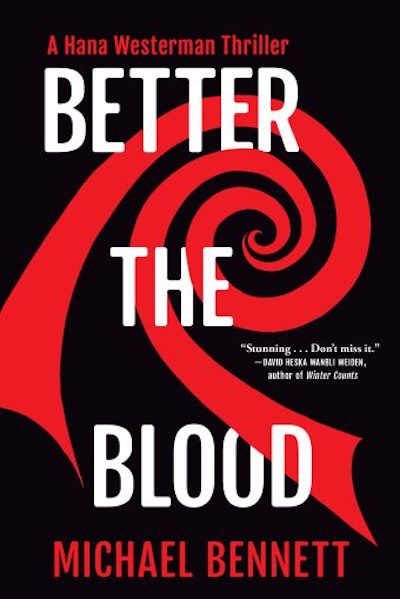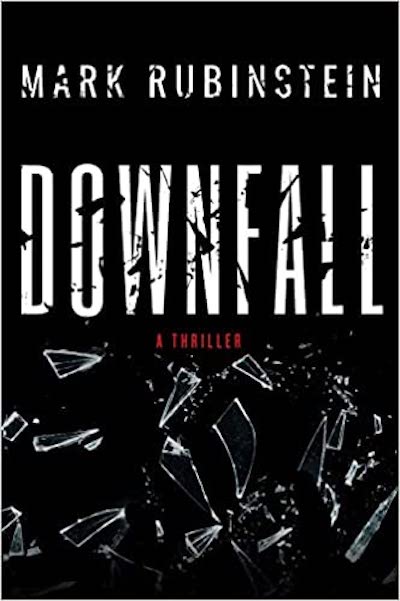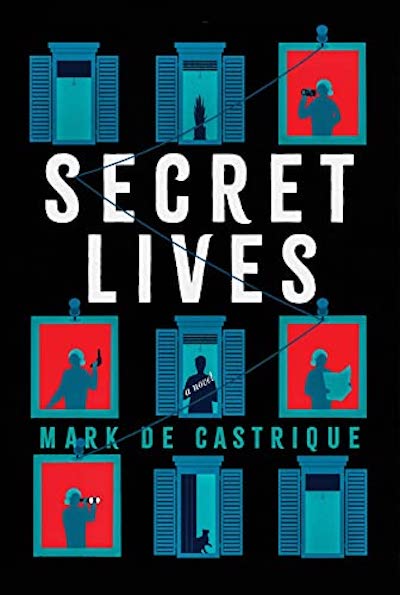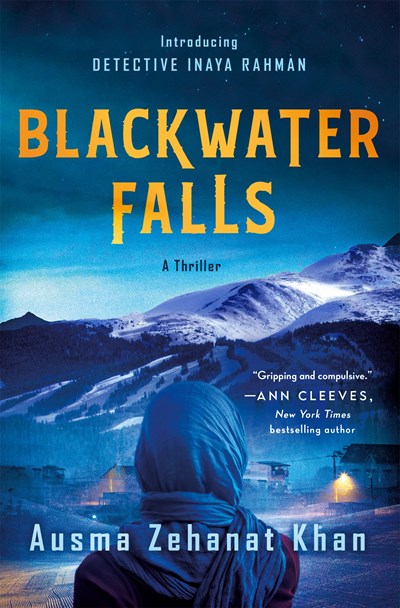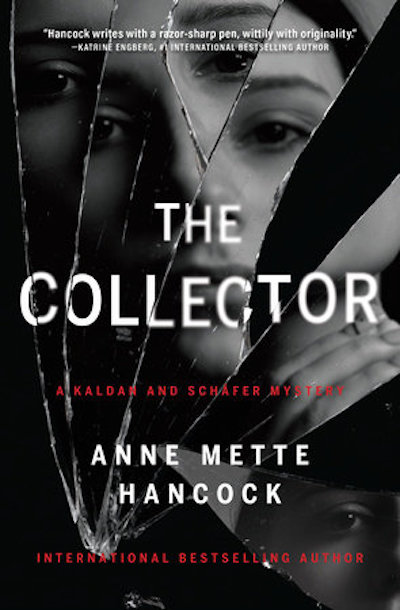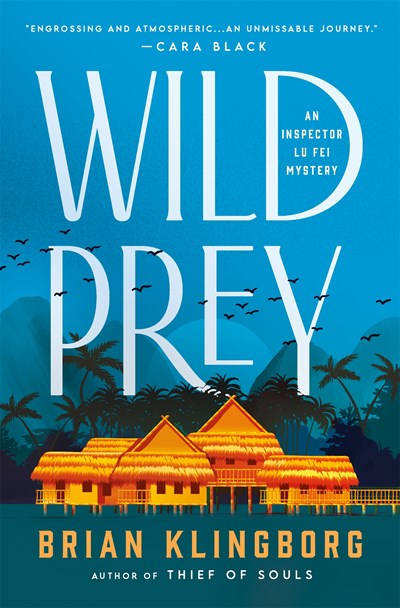A tight and tense police investigation that brilliantly integrates Māori culture and history. When a gruesome murder in contemporary Auckland, with the victim found hanging in a secret room within an abandoned building, leads to another murder, Māori detective Hana Westerman realizes she may be on the trail of New Zealand’s first serial killer. But what connects the victims? A daguerreotype from New Zealand’s bloody, colonial past—plus texts and images the killer sends her—provide Hana with a terrifying road map to what’s ahead if she can’t stop him. Through Hana, author Michael Bennett (Ngati Pikiao, Ngati Whakaue) connects the past and the present, both in New Zealand’s history and within Hana’s own life. To find the killer; keep her family safe, especially her university-age, politically charged daughter; and face a painful incident from her youth, Hana must undergo a transformation. And the woman we meet at the end of the narrative is indeed far different from the one who begins it. This is crime fiction at its best: well-paced, richly characterized, and fearless in confronting the pain of colonialism.
Police Procedural
Veteran NYPD Detective Art Nager and his newbie partner, Liz Callaghan, might have the makings of a cold case on their hands. Or two cold cases…nobody’s sure. Arriving at his Manhattan Upper East Side office, Dr. Rick Shepherd is stopped by police. Somebody’s been shot in the back, on the steps. When the victim is shown later on the news, Rick and his wife are shocked: he could be the doctor’s twin. In a lengthy, wryly funny scene, we see a jaded cop brush off the coincidence, but it doesn’t seem so random the next day when Rick’s father is also murdered, also shot in the back. The elder Dr. Shepherd was on a house call. But maybe it was more. Or could it be that a low-life whom Rick’s sister dated had enough of her family’s dislike? Perhaps a disgruntled patient? And is the second murder connected to the first, and to the creepy silent phone calls to Rick’s home? The detectives have their work cut out, and they portray the best of a police-procedural duo: camaraderie, doggedness in pursuit of the truth, and revelations of past relationships on and off the job. Narrator Nager’s growing feeling that this relationship could become more adds that something extra that makes this read comforting as well as a great puzzle. Did I mention the closing twist?
A high energy foray into cryptocurrency and government corruption. At the center of the novel is petite, running-suit clad, 75-year-old Ethel Crestwater, a former FBI agent who operates a boarding house in Arlington, VA for law enforcement folk who need a temporary home in the DC area. Never married and with no kids, Ethel starts every morning in her basement with a round of RBG’s exercises. The latest addition to her clan is Jesse, a remote relative, but her only relation, who’s moved to DC for graduate work in computing. When one of “her” agents is gunned down in front of her house, Ethel, assisted by double-first-cousin-twice-removed Jesse, catapults into action. It helps that Ethel knows—and is owed favors by—a range of characters, from the director of the FBI to the Secret Service to the local Arlington detective; part of the fun of the book is watching the territorial struggles among the different agencies. Yes, wise-cracking Ethel is highly entertaining, but to de Castrique’s credit, she’s no cutesy stereotype of a gun-wielding grandma. She’s got her own story, and it’s a complex one. Ethel and sidekick Jesse make a great team; how about Jesse drops out of school and they take up sleuthing full time? Bonus: this book is a helpful primer for the uninitiated on cryptocurrency and how it works. Readers who enjoy this novel will also appreciate Deanna Raybourn’s Killers of a Certain Age.
How’s this for a setting: a 205 unit high-rise building in rural Alaska that houses the entire town’s population as well as stores, offices, and more. Welcome to Point Mettier, a pretty creepy village to begin with that only gets worse when body parts—a foot, a hand—wash up on the frozen shore. The local cops seem ready to shrug off the remains—lots of tourists fall off those cruise ships!—when they’re joined by Anchorage detective Cara Kennedy, who takes the matter a whole lot more seriously. What was meant to be a quick visit becomes a much longer excursion as the first brutal storm of the season moves in, closing off the tunnel, the one way in and out of town during winter. With time to spare, Cara digs deeper into the community, only to discover that almost everyone in Point Mettier has a secret to hide. A simmering romance with one of the other officers provides Cara with much needed distraction, but soon enough a violent gang, hanging out in a nearby Native village, takes center stage. This is a successful, well-paced first novel that juggles a range of cultures, a handful of strong characters, and a nuanced protagonist, delivering a very satisfying ending. And get this: Point Mettier pretty much actually exists. Check out Whittier, Alaska.
Inaya Rahman is stuck between two worlds. She’s a detective with the Community Response Unit of the Denver police department, which was created after 2020’s protests against police brutality. When she’s called to a horrific scene —a little girl, Razan Elkader, has been murdered and nailed to the door of the mosque where Rahman worships—she knows she can help, but she’s facing her usual problem: “too brown for the badge, too blue for her co-religionists.” She forges on, in private dealing with her family’s worries that the police force is too dangerous and her mother’s fretting that Inaya isn’t married yet. Outside forces are far less gentle: a biker gang affiliated with a local Evangelical church is far from happy that Syrian refugees have settled in the town and none too worried about bringing Razan’s murderer to light. Khan’s (Esa Khattak and Rachel Getty Mysteries, Khoran Archives Fantasy Novels) fast-moving but thoughtful series debut goes far beyond newcomers-vs.-racists tropes to look at real life in a changing town. Rahman is a tough, lovable and often funny protagonist who will appeal to fans of Joanna Schaffhausen’s Annalisa Vega.
Hopes and fears are nested within secrets and lies in this historical romance/spy novel that moves from English drawing rooms to the 1936 Berlin Olympics. The same fraught layers form the novel, which sees pensive Viviane Alden travel to Germany with her flighty stepsister, Julia, to visit eligible distant acquaintances. The author’s note from Canadian author Cornwall (The Woman at the Front) explains that right up till 1939, intermarriage of English and German aristocracy was encouraged as a way to avoid a repeat of the Great War. The young women are matched with Otto and Felix, sons of the house, who, like Viviane and Julia, show how different siblings can be. Otto is a devoted Nazi who’s rising in the ranks, while his brother, a chemist who flaunts his family’s expectations by working with a Jewish Nobel prize winner, wants none of his brother’s fascist displays. Berlin during Hitler’s reign, and the fawning of international celebrities who thought the dictator a buffoon who’d soon disappear, are chillingly portrayed here. They form an ever more sinister backdrop to Viviane’s clandestine photography of wartime activities in partnership with a dashing journalist/spy. This has an air of Ian McEwan’s Atonement, with its sweeping vistas and wartime romance; fans of the debutante politics of Bridgerton will find intrigue here too.
Hancock’s series debut, The Corpse Flower, which featured in this newsletter’s debut, introduced Danish journalist Heloise Kaldan and police officer Erik Schäfer. The somewhat jaded friends don’t work together per se—it’s more that they investigate the same crime in parallel while throwing each other tidbits that help move the case along. Their unusual arrangement swings into gear again when a child goes missing. Lukas Bjerre goes to the same Copenhagen school as Heloise’s friend’s daughter, so the journalist has an in, but that doesn’t make the search any easier. Lukas seems to have simply vanished, with the whole school day having passed before anyone noticed. At the same time, Heloise is going through personal turmoil as she’s unwillingly pregnant, the father “a crummy wolf in permanent press trousers,” according to Schäfer. Adding to Kaldan’s anguish is her inability to remember where she saw a barn that the missing boy might be held in—one that features in Lukas’s collection of photos illustrating his pareidolia, or tendency to see faces in inanimate objects. As the search continues, a suspect’s PTSD forms part of the tale, adding to the feeling that this whole case hinges on mental instability, with the danger to Lukas the one constant in a storm of fear. Kaldan and Schäfer form a realistic and entertaining if gruff duo, one whose work readers will gladly jump into again.
Everyone’s battling extremes in Mo’s latest Sweden-set psychological thriller-slash-police procedural. Thomas Ahlström loves his toddler son, Hugo, but has a daughter he abandoned when she was the boy’s age. That daughter, Lykke, starves herself for days on end just to have something she can control, but tenderly cares for the shadow lilies growing her in garden. Detective Hanna Duncker, back in her second installment in the series (after The Night Singer), is as determined a cop as they come but is sick of the job’s endless “death, lies, and families.” More of that is on the cards, though, when she and her partner must investigate the disappearance of Thomas and Hugo. Suspects and secrets abound, as do red herrings, and readers will be rapt as one by one, the innocent—of this crime, anyway—drop away and Hanna and Erik face danger over and over to get to the heart of a violent puzzle. At the same time, Hanna is tantalized by possible new details on an old killing; her father was convicted, but now a contact in that case wants to talk. We end on a cliffhanger—bring on #3!
When a member of the Kappa Phi Omicron fraternity is killed when crossing an Athens, GA street, it at first seems like an unfortunate accident. Homicide Detective Marlitt Kaplan is first on the scene because she happens to be nearby, but it turns out that her murder-investigation skills might be needed after all, because witnesses all mention the same odd set of facts. The victim, Jay Kemp, appears to have been run over by…Jay Kemp. Although he didn’t have a twin, a person who looked exactly like him was driving the car that ran him over, and that person was smiling as he gathered speed while moving toward Jay. The victim’s fraternity is the first place Kaplan and her partner hit when gathering facts about Jay, and from the start, things don’t look right. Is the boys’ secretiveness just fraternity culture or a coverup? Nothing is clear, and it’s made even murkier by the intertwining of grudges and dramas with former fraternity members, current members who are on the outs, and the many, many girls in the wings. A slowly unfolding backstory concerning what Marlitt endured when her old friend joined a different fraternity adds to the mystery. This intriguing debut is one for fans of academia gone wrong, such as depicted in the TV series The Chair.
The aftermath of the pandemic combines with desperation and greed in the second in Klingborg’s series, a thriller set in northern China and Myanmar. It stars Inspector Lu Fei, whom we meet while he and his colleagues—idiots every one, if we’re to believe Lu—stalk a man who’s suspected of selling endangered-animal parts that are popular as folk remedies. The government has cracked down hard on live-animal (or “wet”) markets since COVID-19 made them the focus of the world’s attention, and it’s Lu’s duty to make the rigid bureaucracy felt on the ground. Back at the station, a thin, scared girl, Tan Meirong, won’t leave until someone pays attention to the disappearance of her sister, Meixiang, who works in a restaurant that Lu learns has “off-menu” items for rich diners. It’s hard for even Lu to get someone to care about Meixiang, who’s regarded as rather disposable, but he persists, going undercover to the source of the forbidden delicacies. Lu Fei is a character to ponder. He’s mean to his girlfriend and even Meirong, but he won’t let Meixiang go. But mostly readers will be caught up in the exciting international chase that sees Lu hitting the road with little regard for his safety and armed with little except a strong desire to trample odious characters. James Patterson fans, this one’s for you!

